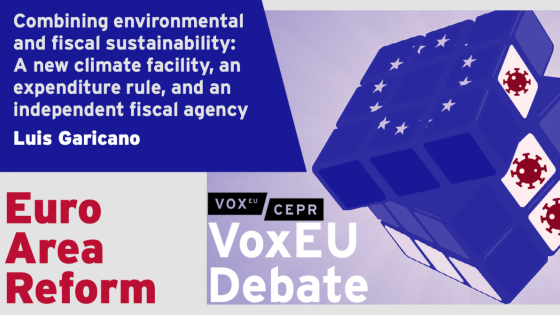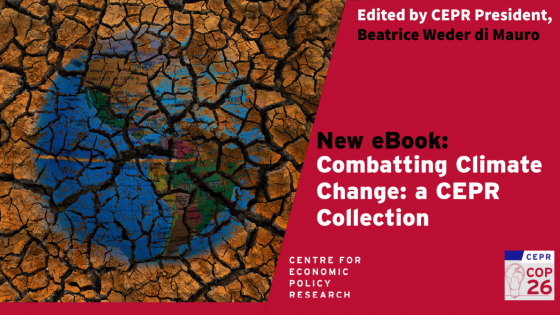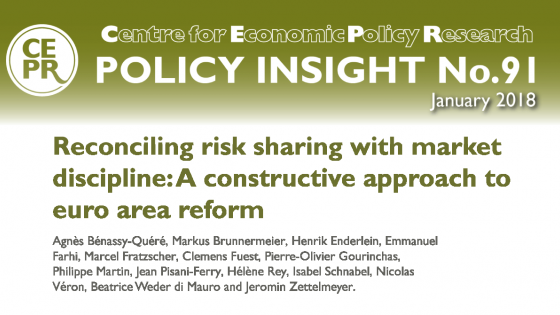Editors' note: This column is a lead commentary in the VoxEU debate on EU economic policy and architecture after Covid.
Without a fiscal union, the EU cannot enforce a common anti-cyclical fiscal stance among EU members, nor can it prevent a few profligate members putting at risk the stability of the system by provoking a debt crisis. That is why the EU has put in place a set of fiscal rules limiting budget deficits and public debt in member states.
However, the rules have failed: on average, euro area members have complied with them only one of every two years since 1997 (Larch and Santacroce 2020). This is at least in part a consequence of a badly designed fiscal framework. The full legislation concerning fiscal rules is extremely complex and involves two treaties, ten regulations, one directive, and one communication and has been subject to at least six extensions or modifications. The Stability and Growth Pact relies on four different indicators which are difficult to calculate and out of governments’ control. Furthermore, no sanctions have ever been imposed despite repeated infractions, since the application of the rules is conditional on bilateral negotiations with the Commission (EFB 2019).
Successful reform proposals must make macroeconomic sense, facilitating a countercyclical fiscal stance. They must provide incentives to the Commission and member states to abide by the rules. And they must be politically feasible within a short-time horizon (the current Commission term).
Proposals requiring treaty change, such as Bénassy-Quéré et al.’s (2018) idea of transferring the Commission´s current surveillance functions to an independent body or Blanchard et al´s (2021) proposal to shift enforcement powers from the Commission to the Court of Justice, push the boundaries of what is politically feasible. Proposals to change the reference values of the excessive deficit procedure,1 as the ESM’s idea to increase the debt threshold from 60% to 100% (Francová et al. 2021), can be implemented without reopening the Treaties, but seem politically impossible, as shown by the paper signed in September by eight finance ministers from fiscally conservative countries (Politico 2021).
On the other extreme, proposals (such as the one the Commission appears to have in mind, at least for the short term)2 to simply increase flexibility through the reinterpretation of existing rules do not go far enough. Additional flexibility would only result in increased political discretion in the application of the framework.
Most proposals seek a middle path, by operationalising discipline through a simple and observable expenditure rule with country-specific debt paths (Bénassy-Quéré et al. 2018, Claeys et al. 2016, EFB 2020). This is a sensible approach that I shall partially follow in what follows. However, as advanced, they do not change the incentives of enforcers or countries, nor do I expect them to be more credible.
A European Climate Investment Facility with an independent fiscal agency
In an improved fiscal framework for the EU, incentives and governance must be front and centre. To achieve this, I propose to set up a parallel system based on incentives that does not involve costly political changes to secondary legislation or the Treaties and is therefore compatible with the current framework. Such an approach rests on two pillars:
1. A new European Climate Investment Facility (ECIF) to provide grants and loans to fight climate change until 2050, when the Union must reach net zero emissions, worth on average €57 billion each year. This would be financed by the issuance of common debt guaranteed by increasing the ceiling of new own resources (such as the new Carbon Border Adjustment Mechanism and the extension of the Emissions Trading System).
The proposed size of €57 billion annually would allow Europe to bridge, on average, 50% of the gap of annual public climate investment needed to reduce CO2 emissions by 55% by 2030. This amount roughly represents on average 0.4% of the EU’s 2019 GDP and could be set to increase in moments of economic stress and decrease in times of high growth (see online Appendix for calculation).
Unlike in the case of the EU’s Recovery and Resilience Facility (RRF), and to facilitate political feasibility, there would be no direct transfers to the benefit of certain member states. Redistribution would only exist through lower borrowing costs – an implicit subsidy from the more creditworthy members to the less creditworthy ones.
2. An independent European Fiscal Agency (EFA) to assess the good standing of different member states to access the Facility. Access to the ECIF would depend on compliance with fiscal conditions, drawing inspiration from the Recovery and Resilience Facility Regulation, which laid down the rules to assess and approve recovery plans based on compliance with certain conditions.3
The fiscal rule utilised would be an expenditure rule, which would seek to cap primary expenditure growth at a level ensuring the decline of the debt ratio over a given number of years. The speed of convergence to 60% would be differentiated by country (countries with high debt could take more time) and would also consider the interest rate-growth differential.4 The speed would also change through the cycle, to facilitate countercyclical policy. The specific assessment criteria could be embedded in the future ECIF Regulation and, thus, it would not require any modification of the EU’s fiscal rules.
Under this model, the Commission would still oversee compliance with the EU’s fiscal rules and make the final recommendation to the Council on disbursements under the ECIF, as determined by Article 126 TFEU. However, the EFA would help the Commission make decisions that are credible and coherent.
Assessment and justification
1. Legal rationale
The proposal builds on NextGenerationEU (NGEU), the recovery instrument created to combat the economic fallout caused by the Covid-19 pandemic. This instrument was ground-breaking politically and economically, by making a reality the objective of financing common challenges by issuing common debt. But it was also novel legally: it proved that the EU Treaties had the flexibility to accommodate this borrowing at a time of urgent need. The climate emergency is such a need.
The reader may wonder about the compatibility of the proposal with the current framework of fiscal rules, especially in the case of conflicting outcomes under both sets of criteria. On the contrary, the parallel coexistence of both systems is possible. Coherence is ensured by the role of the European Commission in both mechanisms. The Court of Justice was confronted with a similar situation when the European Stability Mechanism was being set-up as the euro area’s lender of last resort. In Pringle,5 the Court concluded that the Commission’s role under the ESM Treaty was compatible with the one foreseen by the EU Treaties. As the final assessment under both ECIF and Article 126 TFEU would remain in the Commission´s hands, the possibilities for incoherence would be minimised.
For maximum transparency, and in a similar way that the national contributions for investments under the European Fund for Strategic Investments are excluded from the structural deficit calculation,6 the Commission could issue a Communication to the effect that investments approved under the ECIF would be excluded from the deficit and debt calculation without changing the fiscal rules. Such a legal instrument does not need to follow any legislative procedure requiring consent or approval from co-legislators.
2. Economic rationale
Macroeconomically, this proposal helps ensure debt sustainability while leaving ample space for anti-cyclicality. It is anti-cyclical because the rate of convergence would change with the point in the cycle (at recession times, convergence could be stopped) and because it provides incentives for member states to comply with an expenditure rule, which has proved to ease counter-cyclical spending (EFB 2020). Also, the exact size of the ECIF can be adjusted to the economic cycle provided it equals an annual average of 0.4% of the EU GDP. Additionally, this proposal would lead to increased investment, which has not yet recovered the levels prior to 2008 in many EU countries (OECD, 2019).
3. Enforcement and incentives
Regarding incentives, the proposal provides access to affordable financial resources to achieve climatic neutrality before 2050, for which there are massive unsatisfied financial needs that will need to be carried out to comply with Europe’s Climate Law. It thus relies on carrots, rather than sticks.
The enforcement is also superior. As a negotiator of this RRF Regulation in the European Parliament, I have witnessed first-hand the need for an independent assessment: earlier this year, the Commission gave identical grades to almost all national recovery plans, which hardly seems the outcome of an objective evaluation (Darvas et al. 2021). Hence the need for an independent European Fiscal Agency to assess whether a country is compliant with a simplified expenditure rule and to evaluate ECIF investments and their compliance with the Facility’s objectives. Taking both into consideration, the EFA would recommend that a country be allowed to access the Facility.
4. Politics
The proposal is, in my view, politically feasible. First, it does not involve a Treaty change or other changes of the current system of rules, although it is not incompatible with any work that may be carried out in that direction. Second, there is broad consensus that the world is facing a climate emergency that requires further investment. Proof of this is that the new German coalition has agreed to set up a new Climate and Transformation Fund to finance the green transition by explicitly excluding it from its debt brake. This facilitates the needed unanimity to approve an amendment of the Own Resources Decision to set up this new facility. Third, it does not diminish member states’ sovereignty. Member states are not forced to access the funds in the Facility. Southern states gain access to permanent funding with advantaged conditions through limited debt mutualisation; Northern states obtain credible adherence of the union to fiscal sustainability.
Finally, this proposal is feasible within current time constraints. We have 12 months for the reform of EU fiscal governance to enter into force when the escape clause expires, and we have nine years to reduce CO2 emissions by 55%. Our recent experience establishing the NGEU and the RRF proves that we have the legal capacity to approve the regulation needed to establish the ECIF within 1 year.
To conclude, we need massive investments to achieve climate neutrality by 2050 but this cannot be achieved by making the EU lose its economic credibility. We need a fiscal framework that serves this purpose. The ECIF would become a milestone agreement to find solutions for both environmental and fiscal sustainability and would improve the current governance of the system by establishing a true fiscal watchdog, the European Fiscal Agency. This proposal would encourage both investments and fiscal discipline, is incentive-based and has greater compliance potential; it would discourage discretion in the application of the rules, and it is politically feasible and timely given our prior experience with NextGenerationEU. We have no time to lose.
Author’s note: Thanks to Jean Pisani-Ferry and Jeromin Zettlemeyer for excellent comments.
References
Blanchard, O, A Leandro and J Zettelmeyer (2021), "Redesigning EU fiscal rules: From rules to standards", Economic Policy 106.
Claeys, G, D Zsolt and A Leandro (2016), "A Proposal to Revive the European Fiscal Framework", Bruegel Policy Contribution.
Darvas, Z, M Dominguez-Jimenez, A I Devins et al. (2021), "European Union countries' recovery and resilience plans", Bruegel.
EFB – European Fiscal Board (2019), Assessment of EU fiscal rules with a focus on the six and two-pack legislation.
EFB (2020), Annual Report.
EFB (2021), Annual Report.
Bénassy-Quéré, A, M Brunnermeier, H Enderlein, E Farhi, M Fratzscher, C Fuest, P-O Gourinchas, P Martin, J Pisani-Ferry, H Rey, I Schnabel, N Veron, B Weder di Mauro and J Zettelmeyer (2018), “Reconciling risk sharing with market discipline: A constructive approach to euro area reform”, CEPR Policy Insight No 91.
Francová, O, E Hitaj, J Goosen, R Kraemer, A Lenarčič and G Palaiodimos (2021), "EU fiscal rules: reform considerations", European Stability Mechanism Discussion Paper 17.
Larch, M and S Santacroce (2020), "Tracking compliance with EU fiscal rules: A new database of the Secretariat of the European Fiscal Board".
OECD (2019), "Government investment spending", in Government at a Glance 2019.
Politico (2021), "Hopes of EU fiscal reform on the rocks after pushback from eight capitals", 9 September.
References
1 Protocol no. 12 on the excessive deficit procedure, annexed to the Treaty on European Union and to the Treaty on the Functioning of the European Union.
2 Commissioner Gentiloni proposed a new interpretation of the current rules as a quick fix. The Commission also opted for flexibilization back in 2015 (communication “Making the best use of the flexibility within the existing rules of the Stability and Growth Pact”).
3 https://eur-lex.europa.eu/legal-content/EN/TXT/?uri=CELEX%3A32021R0241
4 In line with the EFB (2020) proposal to review fiscal rules.
5 Paragraph 112 and 155 to 164.
6 https://eur-lex.europa.eu/legal-content/EN/TXT/PDF/?uri=CELEX:52015DC0012&from=EN
7 https://www.europarl.europa.eu/thinktank/en/document.html?reference=EPRS_BRI(2021)690520



